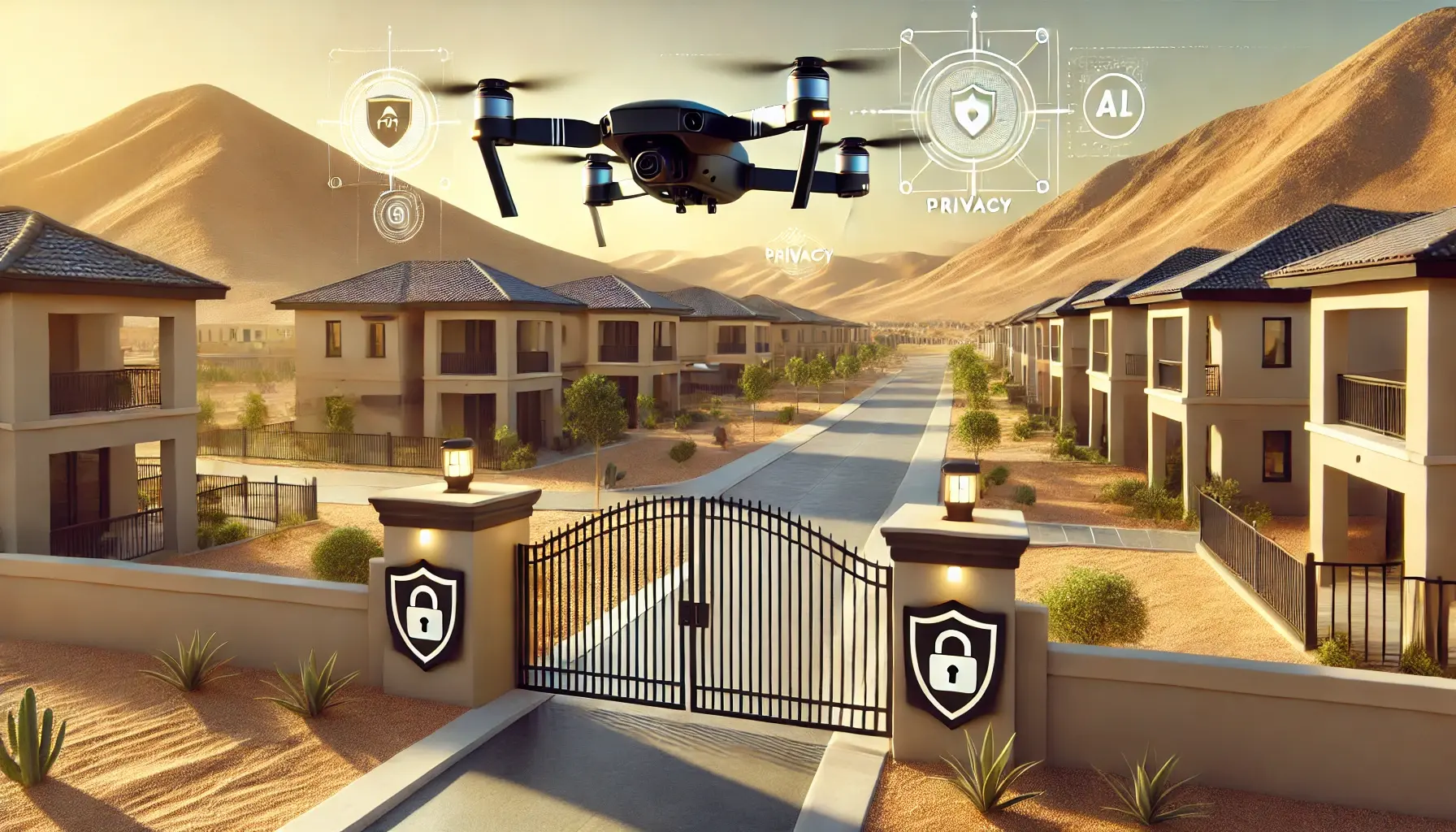For homeowner associations (HOAs) and residential communities, security is not just about safety—it’s about fostering trust, exclusivity, and peace of mind. Traditional security methods often come with limitations, leaving gaps in coverage or driving up costs. Drone security offers a modern solution, but choosing the right provider is key to making it work effectively for your community. Here’s what you need to know when selecting a drone security provider for your neighborhood. Need help setting up aerial drone security for your gated community?
1. Affordability and Value for Money
The Challenge: Many HOAs operate within tight budgets, trying to balance cost with effective security measures. Overpriced or poorly managed systems can lead to wasted resources and dissatisfied residents.
What to Look For:
-
Transparent Pricing: Avoid hidden fees by ensuring the provider outlines all costs, including setup, maintenance, and operational fees.
-
Scalable Options: Choose a provider offering packages that align with your budget and can expand as your community grows.
-
Proven ROI: Look for metrics or case studies showing how their systems have reduced costs or prevented incidents.
Key Question: How does your pricing scale based on community size, and what cost savings can we expect over traditional security methods?
2. Privacy Compliance and Resident Trust
The Challenge: Privacy is a top concern for residents. Improper monitoring or data handling can lead to mistrust and legal issues.
What to Look For:
-
Geofencing Capabilities: Ensure drones are programmed to monitor only public or designated areas, avoiding private spaces like backyards.
-
Data Security: Check for encryption standards and how long the provider retains video footage.
-
Transparent Policies: Residents should be informed about what is monitored and how their data is protected.
Key Question: How do you ensure privacy compliance, and what measures are in place to protect resident data?
3. Technology Capabilities
The Challenge: Not all drone systems are created equal. Outdated or underpowered technology can result in poor performance, leaving your community vulnerable.
What to Look For:
-
High-Resolution Cameras: For clear visuals in identifying potential threats.
-
AI-Powered Analytics: To detect anomalies and suspicious activities in real-time.
-
Thermal Imaging: Essential for night patrols and low-light conditions.
-
Automated Patrols: Drones should be able to operate autonomously with pre-programmed routes.
Key Question: What advanced technologies do your drones include, and how do they enhance security coverage?
4. Integration with Existing Security Systems
The Challenge: Many HOAs already have security infrastructure, such as CCTV cameras or access control systems. Adding drones should enhance these systems, not complicate them.
What to Look For:
-
Seamless Integration: Drones should connect with existing systems, providing unified monitoring.
-
Centralized Control: Look for platforms that allow you to manage drone feeds alongside other security tools.
-
Compatibility: Ensure the provider’s technology works with your current software and hardware.
Key Question: How do your drones integrate with existing security systems, and what tools do you provide for centralized management?
5. Proactive Threat Detection and Response
The Challenge: Reactive systems only address issues after they occur. HOAs need proactive measures to prevent incidents before they escalate.
What to Look For:
-
Real-Time Alerts: Drones should provide instant notifications of suspicious activity.
-
Incident Documentation: Ensure drones can record and store video for future reference.
-
Autonomous Response: Advanced drones can track intruders or suspicious vehicles until ground teams arrive.
Key Question: How do your drones detect and respond to threats in real-time, and what automation features are included?
6. Training and Support
The Challenge: Even the best drone systems can fall short without proper training or responsive support. HOAs need a partner that provides ongoing assistance.
What to Look For:
-
Comprehensive Training: Providers should offer hands-on training for security personnel and HOA managers.
-
24/7 Technical Support: Quick resolutions to technical issues are critical to maintaining security.
-
Regular Updates: Drones and software should be updated to stay ahead of emerging threats.
Key Question: What training and support services do you offer, and how quickly can you address technical issues?
Key Features to Evaluate in a Drone Security Provider
| Feature | Importance |
|---|---|
| High-Resolution Cameras | Provides clear visuals for effective monitoring. |
| Thermal Imaging | Enables night surveillance and low-light operations. |
| AI-Powered Analytics | Detects threats proactively. |
| Geofencing | Ensures privacy by restricting drone activity to specific areas. |
| Integration Capabilities | Enhances existing security systems. |
| Scalability | Adapts to growing or changing community needs. |
Questions to Ask Potential Providers
-
How customizable are your solutions for our community’s specific needs?
-
What privacy protections are built into your system?
-
Can your drones handle extreme weather conditions?
-
What’s the typical response time for technical support?
-
How do you measure the effectiveness of your drone security system?
Frequently Asked Questions (FAQs)
Q: Are drone systems cost-effective for smaller communities? A: Yes, drone systems are scalable and often reduce costs by minimizing manpower and infrastructure needs.
Q: How do drones ensure resident privacy? A: Drones use geofencing to monitor only designated areas and employ encrypted data storage to protect sensitive information.
Q: Can drones operate 24/7? A: Yes, most advanced drones can operate continuously with automated charging stations or backup units.
Q: Do drones require constant manual operation? A: No, drones can be pre-programmed for autonomous patrols and monitored remotely by security teams.
Q: How quickly can drones respond to incidents? A: Drones can be deployed within seconds, providing real-time visuals to assist in immediate responses.
.png)
.png)
.png)

.png)
.png)

.png)
.png)
.png)
.png)
